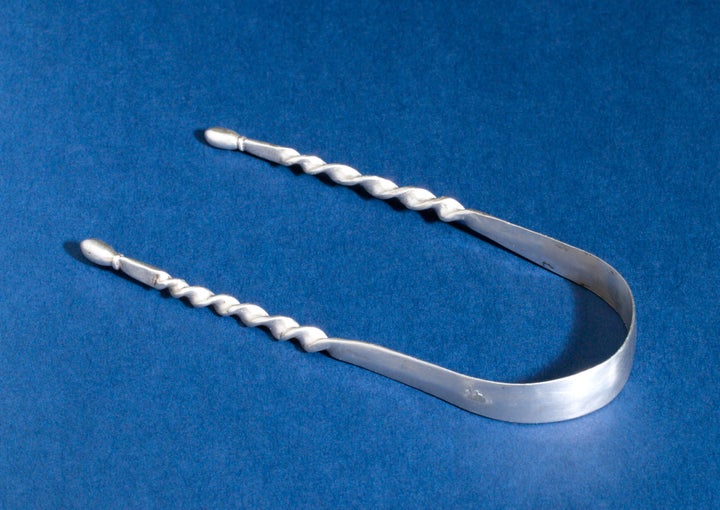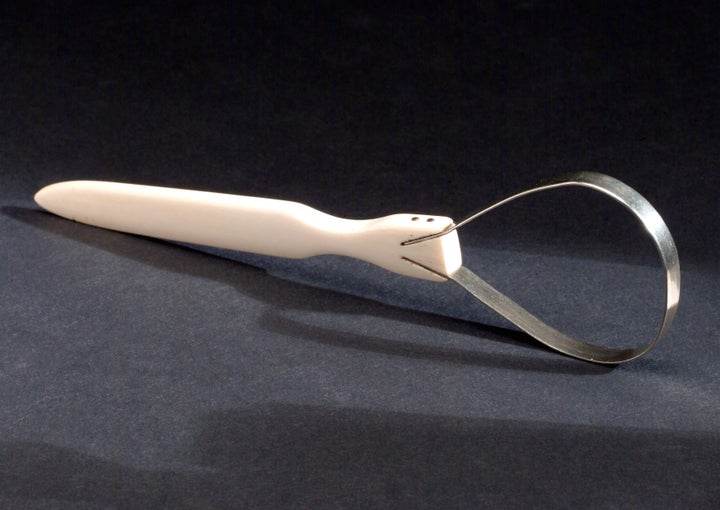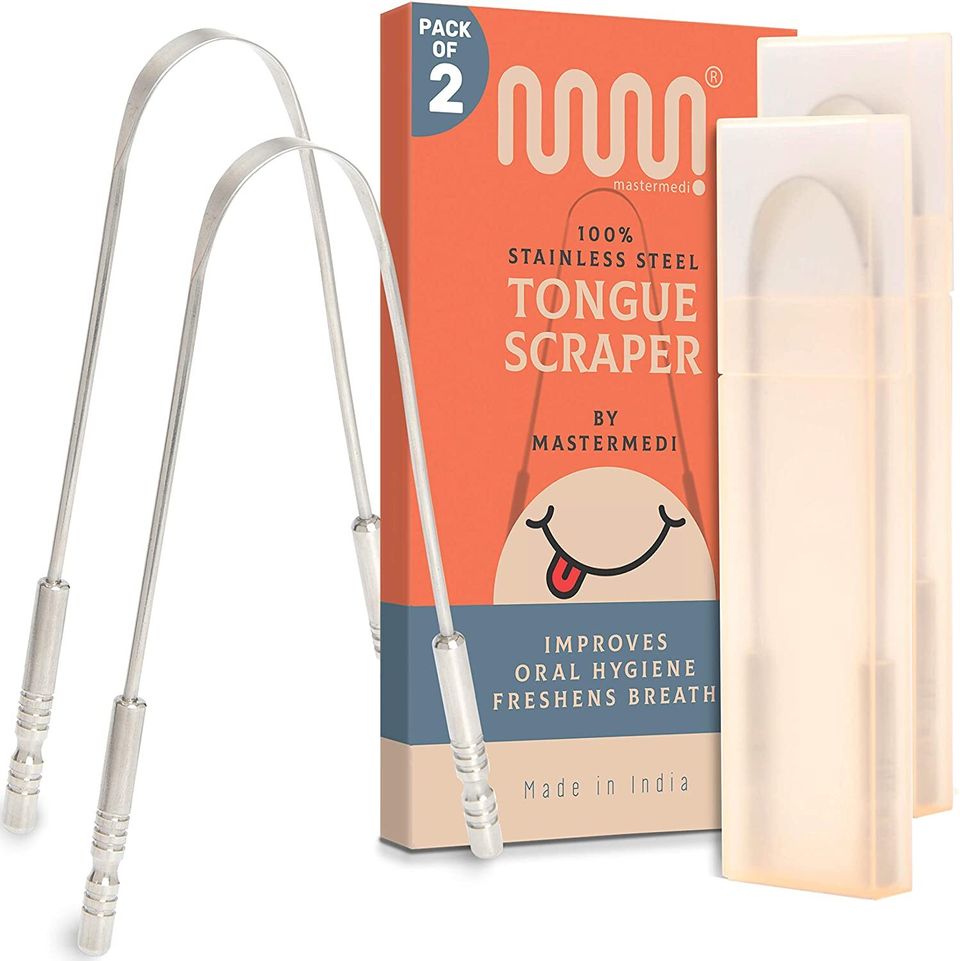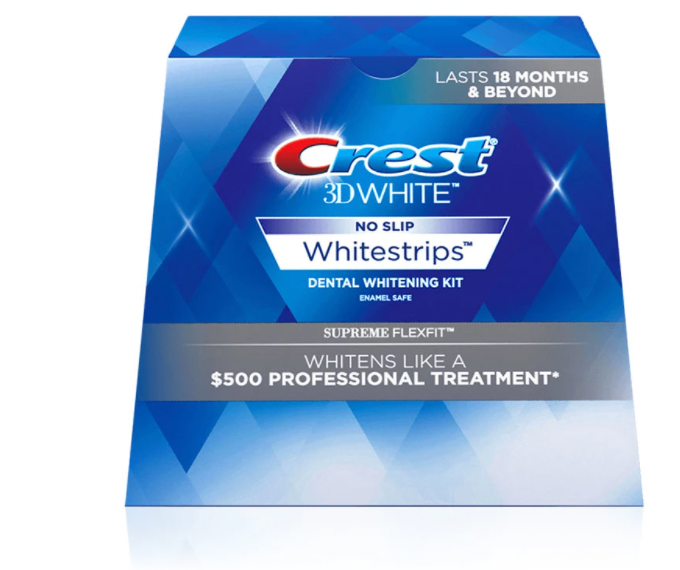
Many of us might be diligent about brushing our teeth, flossing and using mouthwash. But there’s another element of oral hygiene that people are less familiar with: tongue scraping.
“Tongue scraping is an oral hygiene process done to clean the bumpy surface of the tongue,” Dr. Erin Issac, a board-certified pediatric dentist, told HuffPost. “The surface of the tongue has tiny folds and fingerlike projections that can harbor food debris, bacteria and fungi causing stinky breath and even infections.”
Tongue scrapers are usually long, thin pieces of metal or plastic bent in a U shape. There are also versions that look like toothbrushes with loops at the end. Whatever style you prefer, the process is simple: Run it along the surface of your tongue to help remove the whitish or yellowish buildup.
Where does tongue scraping come from?
“It is a longstanding practice in Eastern medicine,” said Nicole Parmar, CEO and co-founder of the tongue scraper brand Gunkii. “Tongue scraping has always been very important to the ancient Indian medical system known as Ayurveda. It is based on a ‘natural’ and holistic approach to physical and mental health.”
Although tongue scraping, or jihwa prakshalana, is an ayurvedic self-care ritual dating back many centuries, there are more recent historical examples of this custom in Western cultures as well. Between the 15th and 19th centuries, affluent Europeans were known to use instruments to clean their tongues, but the practice was limited to the upper class.
Photos of vintage tongue cleaners from the U.K. suggest these tools didn’t look all that different from the scrapers we use today.


What are the benefits of tongue scraping?
“Most people who tongue scrape do it mainly to eliminate bad breath, but it can also help to remove harmful bacteria from the tongue, improve taste, improve the look of the tongue and overall improve your health,” Issac said.
Indeed, buildup on your tongue can affect the way you taste things, as your taste buds are coated. Research has shown that tongue scraping can improve your sense of taste. There are also benefits to overall tooth and gum health.
“The tongue has millions of things that can trap plaque and bacteria on it,” said Dr. Amanda Lewis, a board-certified dentist. “Everyone accumulates bacteria at a different level. People scrape their tongue to keep their mouth clean. It can also help with reducing overall bacteria count and can help with keeping the breath fresh and teeth white. If you make a habit of scraping your tongue, you will notice many stain-causing liquids come off.”
Why is it getting more popular?
“Although tongue scraping is not yet as common as some other oral care routines such as tooth brushing and/or flossing, it is becoming more and more popular for good reasons,” said Dr. Kami Hoss, a dentist and co-founder of The Super Dentists. “The tongue accumulates lots of microbes and is a common source of bad breath. And toothbrush bristles are not really designed to reach and eliminate the bacteria on the tongue that can cause bad breath and interfere with taste.”
Issac noted that several big dental influencers have been talking about tongue scraping lately, so more people are trying it out and liking the results. She and Parmar also pointed to the ongoing pandemic and the ways it has increased interest in health and wellness for many.
“COVID-19 also made us hyper aware of the state of our breath,” Parmar added, referencing our new mask-wearing reality. “For many of us, it was alarming. Tongue scraping started to pick up during this time when we had to smell ourselves.”

Are there any issues to be aware of?
“I recommend tongue scraping for adults and even teenagers as an adjunct to your typical oral hygiene routine, especially if you seem to suffer from bad breath even after your typical routine,” Issac said. “I do not recommend tongue scraping for children as it is typically not necessary and the tongue scraper itself could be dangerous in little hands.”
She also emphasized that those who suffer from severe, persistent bad breath should seek dental or medical advice as there could be an underlying issue.
Hoss advised against using abrasive tongue brushes with stiff bristles or scrapers with uneven or particularly sharp edges.
“At the very minimum, everyone should brush their teeth and their tongue, but because of the fact the toothbrush bristles are thinner and softer and don’t reach all the areas of the tongue to remove the microbes, I highly recommend people use a tongue cleanser right before brushing their teeth,” he said.
What’s the best way to do it?
Hoss suggested a morning or evening routine to optimize oral health. “Swish with mouthwash ― depending on the ingredients, mouthwash may be used before or after brushing,” he advised. “Floss. Use a tongue cleanser. Then brush with a high quality toothbrush and a safe and effective toothpaste.”
Be sure to follow the instructions included with your tongue scraper, and remember to clean it thoroughly between uses.
As for technique, Parmar recommended the going as far back in your mouth as you feel comfortable.
“Then place [the tongue scraper] on your tongue and apply enough pressure to gently scraper off all of the gunk that is on your tongue,” she said. “Typically, two or three scrapes is enough. If you need more ― do so.”
Beginners might find one side of a tongue scraper is gentler than the other, so you might flip your tongue scraper over at first or make other adjustments as you get used to the process.
“If you are new to tongue scraping, start slowly with light pressure,” Parmar said, noting that if you can slowly introduce more pressure or go further back once you’re used to the process.
If you’re looking to invest in a tongue scraper, we’ve rounded up some options below. HuffPost may receive a share from purchases made via links on this page. Prices and availability subject to change.




